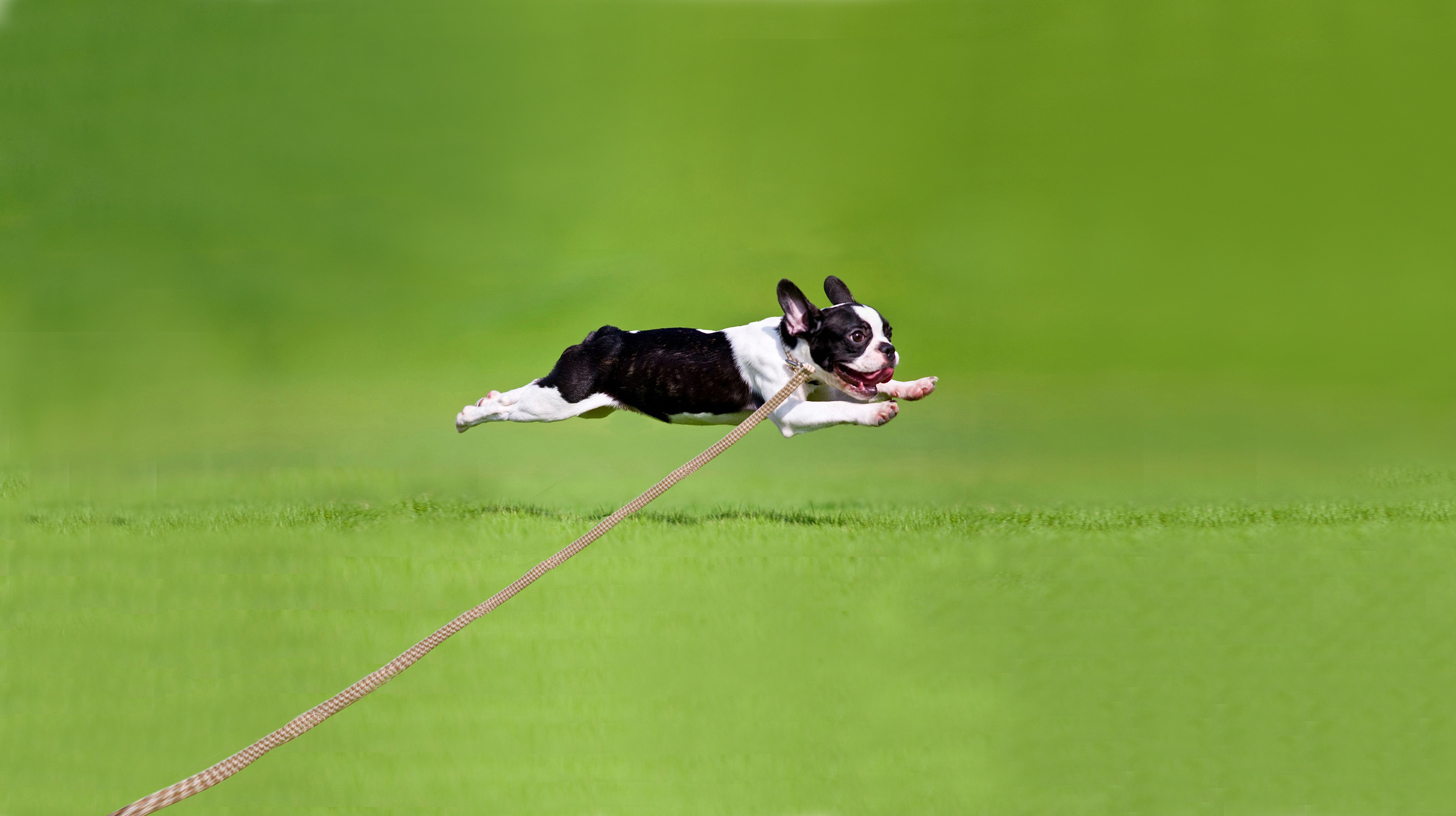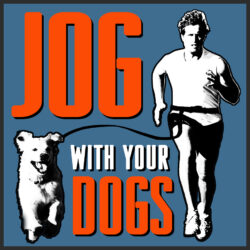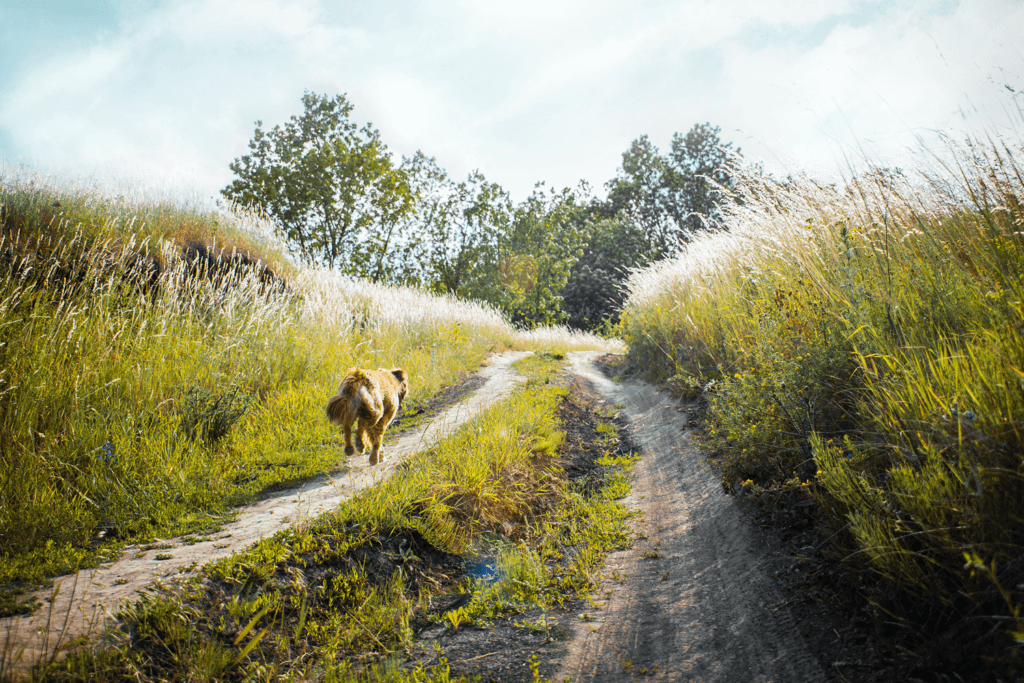
Nothing seems quite so fun and natural as running with your dog on a trail. It’s even more special if you can go off-leash. Fortunately, or unfortunately (depending on one’s viewpoint), you and your dog aren’t the only people on that trail. The golden rule tells us we should consider others. And the credo of all nature lovers “leave no trace” tells us to limit our impact on nature.
Off-leash: Many considerations.
There are so many potential dangers when your pup is off-leash. I hate to be preachy – but you have to expect the unexpected and protect your dog, other people, and your bank account. Lawsuits are nasty.
- There are different rules in different areas. One has to be aware of what is permitted in your area.
- Does your dog obey commands when excited by other dogs, people, or wildlife? Here are some tips for voice command training.
- Know that when another dog (that’s on a leash) is approached by an off-leash dog they almost certainly feel cornered. The leashed dog doesn’t feel the freedom and is immediately on the defensive.
- The same goes when passing slower runners with dogs. A surprised dog is almost always aggressive and ready to defend itself and its owner. Maybe wait for the trail to widen so you can give space and fair warning.
- You love your dog and know he’s harmless – a stranger doesn’t. Maybe they’ve had a bad experience or been bitten before. You should assume that the people you meet are deathly afraid of your lovable pup and don’t let your dog approach anyone unless invited.
- Step off the trail for a moment and let strangers pass.
- Imagine a mountain biker at speed coming upon your dog suddenly. Does the biker run into your confused pup or veer dangerously off-trail risking his own neck?
The good news: there are some great hands-free trail running leashes
Holding a leash while running is a pain. Not only does it limit your reaction if you stumble accidentally, but it can also make your stride off-balance and literally cause you aches and pains.
If you have experienced this, maybe you’ve already done a search for “hands-free” leashes, and have noticed there are a lot of good options.
All are basically an adjustable waist belt with a detachable bungee cord leash. Some are more sturdy and well-made, and some have pockets in the belt for cell phones, are a high-visibility color or reflector, etc.
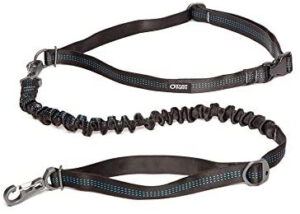
The one I have is just a basic, but well-crafted, adjustable belt with durable hardware. It’s black with a black bungee. Heavy-duty hooks and loops. It’s marketed as Stunt Puppy Stunt Runner Hands-Free Dog Leash.
No pocket though, so I attach the Mobile Dog Gear Bag.
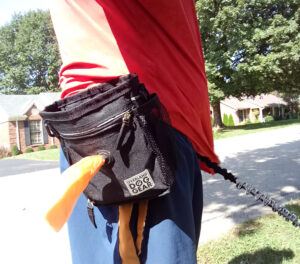
It’s a bag that gets a lot of criticism for being too small, but I think the size makes it perfect. You hardly know it’s there but I can fit a few things. Even extra waste bags and a generously full bag of waste (that’s sealed extremely well). And extra (walled off) pocket for keys, small wallet, and phone.
The guy in the video below is really in love with his hand-free leash that has a pocket and high visibiltiy color.
The standard 6 ft leash you already own is okay. It’s just better for your balance to run hands-free. The expandable “bungee-type” tether provides a shock absorber of sorts to you and your pup.
Retractable leashes extend too far to use in a populated area. They usually extend to 16’, but some extend as far as 26’.
Harnesses are kinder to your dog than collars. The jarring action of a quick stop or start can damage a dog’s neck. A harness obviously spreads any shock across a larger, less delicate area.
Poop
A lot of trail runners believe that bears, deer, and coyotes poop in the wild and don’t clean up, so why can’t your dog?
Dog-do contains a lot of pathogens, viruses, and parasites not found in undomesticated animal waste. Rainwater will wash these contaminants into the streams, then rivers, lakes, oceans, and possibly our reservoirs.
For the very reason we love this natural running space, we owe it to the creatures that live there to not have to drink from a stream that contains these pathogens.
According to the EPA, this is an environmental hazard. It is said that in the recreational parks of Boulder County, Colorado, alone, an estimated 30 tons of dog waste is not picked up each year.

Another disturbing trend is bagging the waste but leaving the bag on the trail.
Real, responsible nature-lovers go by the credo “leave no trace behind”. Pack out what you packed in. Or, leave the trail better than you found it. Maybe pick up that candy wrapper someone dropped by accident.
It’s a dog’s life.
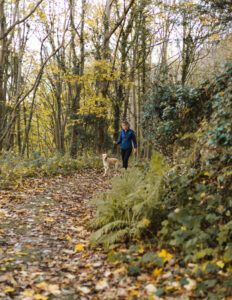 You have to consider what’s best for your dog. Trail running is a great bonding experience for the two of you. And natural surfaces like dirt trails are much better on their footpads and joints than hard paved surfaces (it’s better for your body as well). Just be aware of some limits your running buddy may have.
You have to consider what’s best for your dog. Trail running is a great bonding experience for the two of you. And natural surfaces like dirt trails are much better on their footpads and joints than hard paved surfaces (it’s better for your body as well). Just be aware of some limits your running buddy may have.
- Puppies shouldn’t run long distances. Their fun, crazy, puppy energy makes them seem to run almost everywhere, but experts say they shouldn’t run long distances. A healthy skeletal structure still forming for the first 6 months of a pup’s life. I’ve read some veterinarians suggest skeletal formation lasts up to 1.5 years. Research your breed/mutt, but usually smaller dogs reach full-grown faster than big breeds. Too much stress on bones too early can cause life-long issues. Usually, in large dogs, it’s hip dysplasia.
- There are plenty of things you can do to prepare your puppy to run with you. Heeling on walks, obeying voice commands, stopping at corners, etc.
- Some breeds are not made for long runs. Usually, short snout dogs (brachycephalic breeds) like Pugs, Shih Tzus, Boston Terriers, and Boxers are built for a short sprint but not long ones.
- Some breeds are made for long runs but are sensitive to hot temperatures. Consider early or late runs during hotter months. Watch for excessive panting.
Get out!
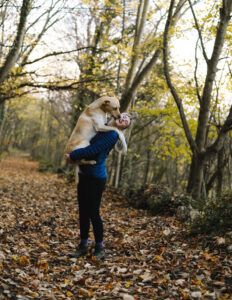 Whether you have a young pup that you’re preparing for trail running, or you’re just trying to get closer to nature with your ol’ running pal, I sincerely hope you can find a nice trail in your area. Walking, running, or sitting in nature – it all beats a couch. Happy trails to you!
Whether you have a young pup that you’re preparing for trail running, or you’re just trying to get closer to nature with your ol’ running pal, I sincerely hope you can find a nice trail in your area. Walking, running, or sitting in nature – it all beats a couch. Happy trails to you!
I believe the above is just common sense that you probably already know and follow. If you disagree or have any other insights pleas share them. I’d love to hear comments, tips, or stories you have about trail running with your dog. Please leave your thoughts below.
